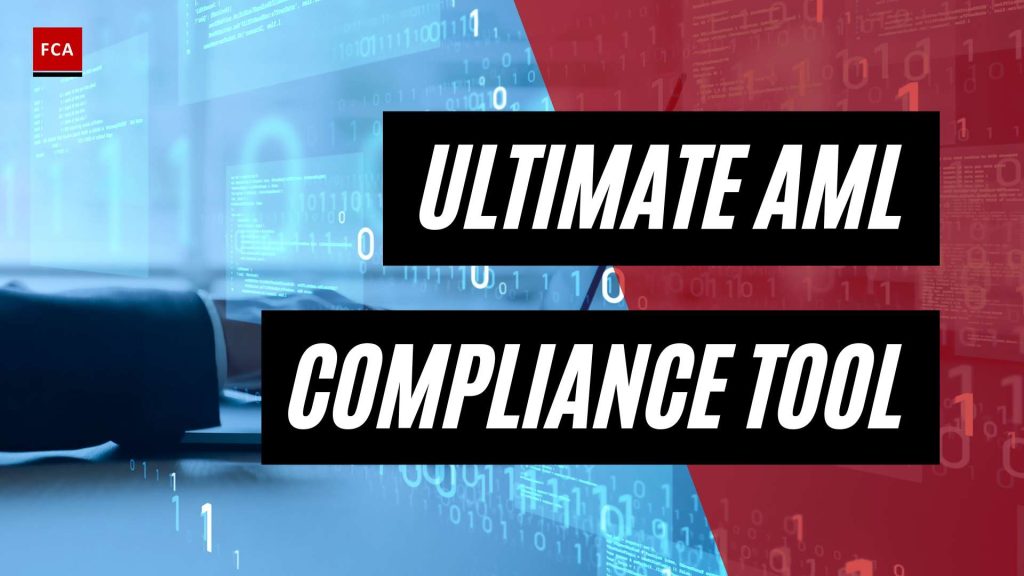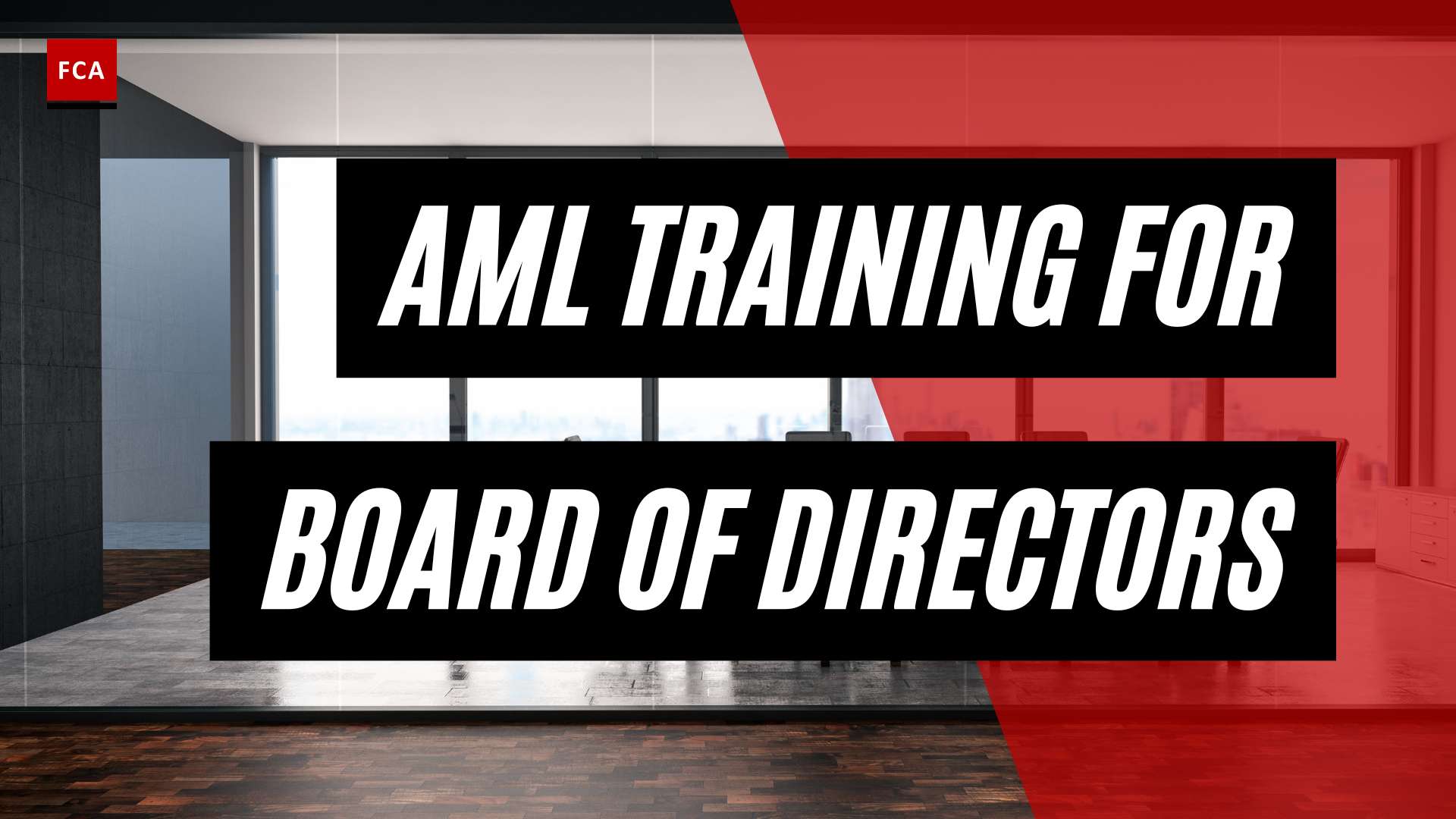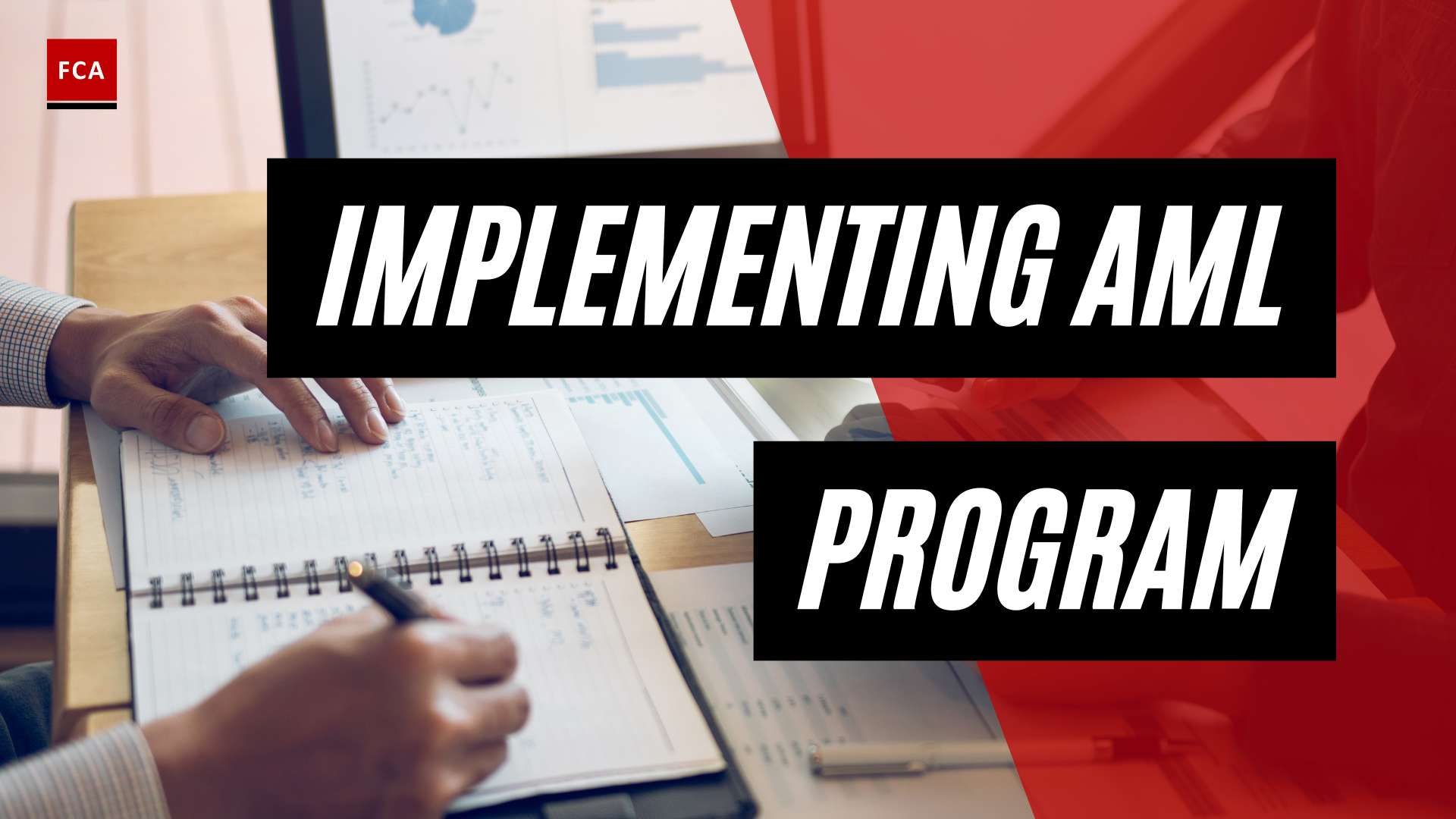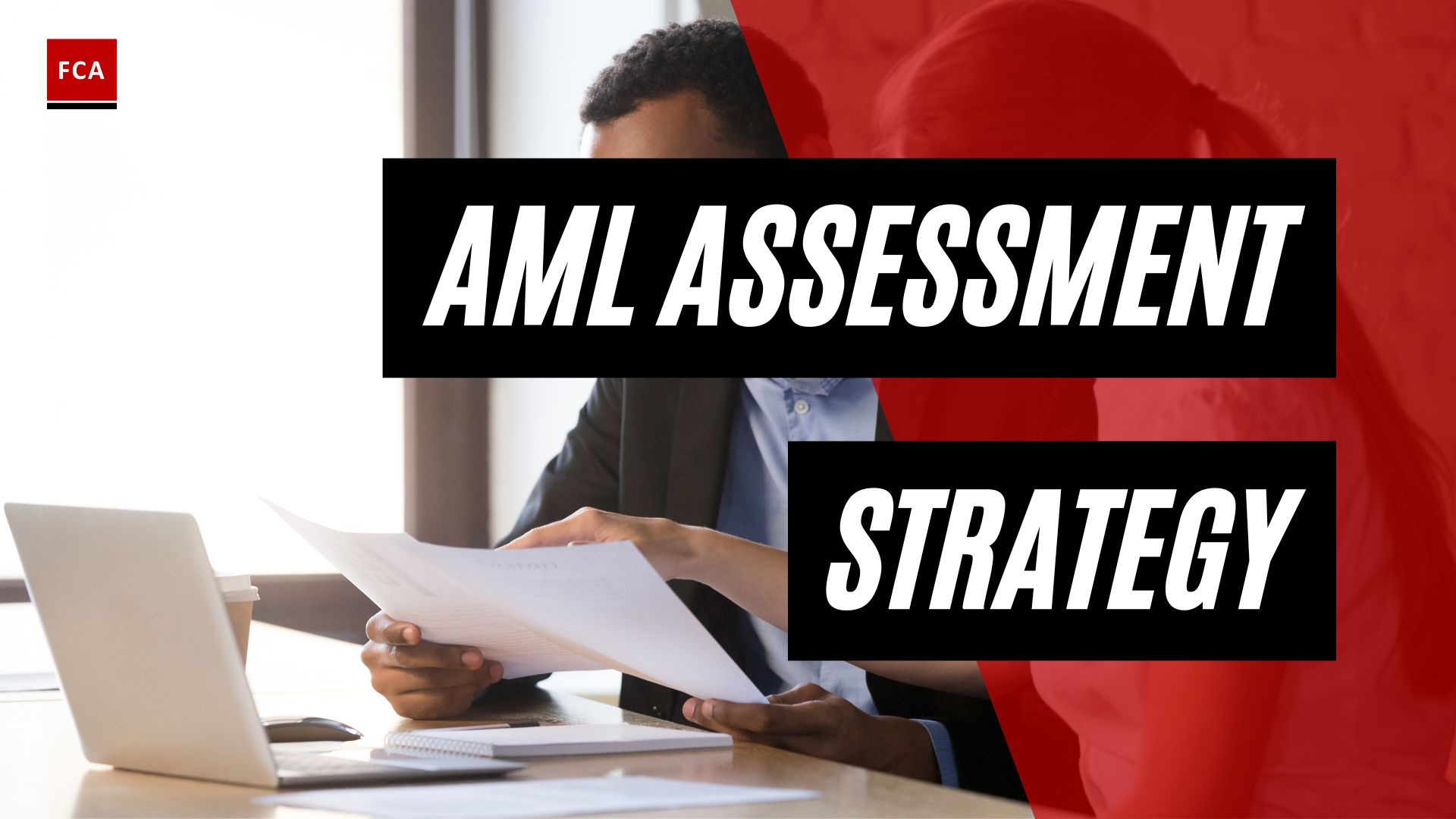AML Reporting for Non-Financial Businesses
When it comes to AML compliance, non-financial businesses face their own set of challenges and requirements. Understanding these challenges and the importance of AML reporting is crucial for ensuring compliance and mitigating money laundering risks.
Understanding AML Compliance
AML compliance refers to the set of policies, procedures, and controls implemented by businesses to prevent and detect money laundering activities. Money laundering involves disguising the origins of illicit funds and making them appear legitimate. Non-financial businesses, including industries such as real estate and jewelry, are increasingly becoming targets for money laundering due to their involvement in high-value transactions.
AML compliance for non-financial businesses involves adhering to regulations and guidelines set forth by regulatory bodies, such as the Financial Industry Regulatory Authority (FINRA). These requirements aim to prevent the use of non-financial businesses as a means to launder money and maintain the integrity of the financial system. It is essential for these businesses to establish and maintain effective AML reporting procedures to ensure compliance with relevant regulations.
Challenges in AML Reporting for Non-Financial Businesses
Non-financial businesses face unique challenges when it comes to AML reporting. One of the primary challenges is the lack of uniform standards and regulations across different sectors and jurisdictions. This variability in regulations can make it difficult for non-financial businesses to navigate and implement effective AML reporting procedures (KYC Hub). The absence of clear regulatory guidelines can lead to confusion and hinder the establishment of robust AML compliance programs.
Additionally, the nature of non-financial businesses’ operations can pose challenges in identifying and reporting suspicious transactions. These businesses often engage in high-value transactions, making it crucial to have adequate monitoring systems in place. However, implementing such systems can be complex due to the diverse nature of non-financial businesses’ operations and the lack of specific guidance.
Furthermore, many non-financial businesses may lack the necessary expertise and resources to effectively navigate AML reporting requirements. The complex nature of AML regulations and the constant evolution of money laundering techniques necessitate ongoing training and awareness for employees. Without proper AML training, non-financial businesses may struggle to identify red flags and report suspicious activities effectively.
Despite these challenges, non-financial businesses must prioritize AML compliance to protect themselves from the severe consequences of non-compliance. Non-compliance can result in hefty fines, reputational damage, and legal implications, which can significantly impact the business’s operations and standing.
By understanding the importance of AML compliance and the challenges specific to non-financial businesses, organizations can take proactive steps to implement effective AML reporting procedures. These steps include utilizing AML software solutions, conducting thorough customer due diligence, and establishing a risk-based approach to AML reporting. The next sections will delve into these key elements of AML reporting for non-financial businesses in more detail.
Importance of AML Compliance for Non-Financial Businesses
Ensuring compliance with Anti-Money Laundering (AML) regulations is of paramount importance for non-financial businesses. By implementing robust AML reporting procedures, these businesses can effectively mitigate money laundering risks and safeguard their operations, reputation, and integrity.
Mitigating Money Laundering Risks
Money laundering poses a significant threat to the global financial system, and non-financial businesses are not exempt from this risk. Criminals may exploit non-financial businesses, such as real estate agencies, jewelry stores, or other sectors, to legitimize illicit funds. By establishing and adhering to AML compliance measures, non-financial businesses can take proactive steps to identify and prevent money laundering activities.
Implementing effective AML reporting procedures helps non-financial businesses detect suspicious transactions, monitor customer activities, and identify potential red flags. Robust customer due diligence (CDD) practices, alongside comprehensive monitoring and reporting of suspicious activities, enable businesses to identify and report any suspicious transactions to the appropriate regulatory authorities. This proactive approach plays a crucial role in combating money laundering and enhancing the overall integrity of the business.
Consequences of Non-Compliance
The consequences of non-compliance with AML regulations can be severe for non-financial businesses. Overlooking AML reporting requirements can lead to hefty fines, reputational damage, and legal implications. The lack of uniform standards and regulations across different sectors and jurisdictions further complicates AML compliance for non-financial businesses (KYC Hub).
Non-compliance may result in significant financial penalties imposed on the business. Fines can range from tens of thousands to millions of dollars, depending on the severity of the violation. These penalties can have a detrimental impact on the financial stability of the business, potentially leading to financial distress and even bankruptcy.
Moreover, non-compliance with AML regulations can lead to civil or criminal charges, exposing individuals involved in non-compliant activities to legal proceedings, sanctions, and potential imprisonment. The legal implications can have far-reaching consequences for both the business and the individuals responsible. It is crucial for non-financial businesses to prioritize AML compliance to avoid these severe consequences.
To mitigate money laundering risks effectively and ensure compliance, non-financial businesses should invest in robust AML reporting procedures, including thorough customer due diligence, monitoring and reporting of suspicious transactions, and adopting a risk-based approach to AML reporting. Staying up to date with evolving AML regulations and collaborating with reporting channels also play a vital role in maintaining compliance and protecting the business from potential risks and penalties.
Implementing Effective AML Reporting Procedures
To ensure compliance with Anti-Money Laundering (AML) regulations, non-financial businesses must implement effective AML reporting procedures. This involves utilizing AML software solutions and implementing Suspicious Activity Reporting (SAR) processes.
Utilizing AML Software Solutions
Technology solutions, such as AML software, can greatly assist non-financial businesses in automating AML compliance processes, enhancing efficiency, and ensuring greater accuracy in AML reporting. These software solutions provide advanced functionalities that aid in customer due diligence, transaction monitoring, and reporting suspicious activities (KYC Hub).
By leveraging AML software, non-financial businesses can streamline their compliance efforts, reduce manual errors, and efficiently manage large volumes of data. These solutions often offer features like risk assessment, transaction monitoring, and recordkeeping, enabling businesses to meet their AML reporting requirements effectively.
Suspicious Activity Reporting (SAR) for Non-Financial Businesses
Effective Suspicious Activity Reporting (SAR) is a critical component of AML compliance for non-financial businesses. SAR helps combat financial crimes and terrorist financing by enabling the timely detection and reporting of suspicious activities. Failure to report such activities can result in severe penalties and even imprisonment for responsible individuals.
Non-financial businesses should establish clear procedures for recognizing and reporting suspicious activities. This includes training employees to identify red flags and providing them with the necessary knowledge and tools to report concerns promptly. It is essential to have reporting channels in place to escalate suspicious activities to the appropriate authorities.
When reporting suspicious activities, non-financial businesses must ensure the accuracy and completeness of the information provided. This includes providing specific details about the transaction or behavior that raises suspicions, as well as any supporting evidence or documentation. Timely and accurate reporting is crucial for effective AML compliance.
By implementing robust AML reporting procedures, non-financial businesses can play their part in combating money laundering and terrorist financing. Utilizing AML software solutions helps streamline compliance efforts, while effective SAR processes ensure the timely detection and reporting of suspicious activities. It is crucial for businesses to stay vigilant, train their personnel, and maintain clear and efficient reporting channels to comply with AML regulations and contribute to the global fight against financial crimes.
Key Elements of AML Reporting for Non-Financial Businesses
To ensure compliance with AML regulations, non-financial businesses must focus on key elements of AML reporting. These elements include customer due diligence (CDD), monitoring and reporting suspicious transactions, and adopting a risk-based approach.
Customer Due Diligence (CDD)
Customer due diligence is a fundamental aspect of AML reporting for non-financial businesses. It involves conducting thorough checks and assessments on customers to identify and verify their identities, understand the nature of their business relationships, and assess the potential risks they may pose. CDD measures typically include:
- Obtaining and verifying customer identification documents, such as passports or driver’s licenses.
- Conducting background checks on customers to determine their reputation and potential involvement in illegal activities.
- Understanding the purpose and intended nature of the business relationship to assess the risk level associated with the customer.
- Monitoring and updating customer information regularly to ensure ongoing compliance.
By implementing strong CDD measures, non-financial businesses can establish a foundation for effective AML reporting and mitigate the risk of money laundering and other illicit activities.
Monitoring and Reporting Suspicious Transactions
Monitoring and reporting suspicious transactions is a critical component of AML reporting for non-financial businesses. It involves implementing systems and procedures to detect and analyze transactions that deviate from normal patterns or exhibit red flags indicating potential money laundering or terrorist financing activities.
Non-financial businesses should establish robust processes for monitoring transactions, which may include:
- Implementing transaction monitoring systems to identify unusual or suspicious activities.
- Training employees to recognize red flags, such as large cash transactions, frequent deposits or withdrawals, or transactions involving high-risk jurisdictions.
- Establishing clear reporting channels within the organization to ensure that suspicions are promptly escalated to the appropriate authorities.
The timely and accurate reporting of suspicious transactions through Suspicious Activity Reports (SARs) is crucial for effective AML compliance. By reporting suspicious activities promptly, non-financial businesses contribute to the detection and prevention of money laundering and other financial crimes.
Risk-Based Approach to AML Reporting
Adopting a risk-based approach is essential for non-financial businesses when it comes to AML reporting. This approach involves tailoring AML measures and reporting procedures to the specific risks faced by the business, taking into account factors such as the nature of the business, its size, and the countries or regions it operates in.
By conducting a comprehensive risk assessment, non-financial businesses can identify the areas of highest risk within their operations and allocate resources accordingly. This allows for a more targeted and efficient AML reporting process, focusing efforts where they are most needed.
A risk-based approach also enables businesses to prioritize their AML efforts, implementing more stringent measures for high-risk customers or transactions while applying less intrusive measures for low-risk ones. This approach strikes a balance between compliance requirements and operational efficiency, ensuring that AML reporting is tailored to the specific needs and circumstances of the business.
By incorporating these key elements into their AML reporting procedures, non-financial businesses can strengthen their compliance efforts, mitigate the risks associated with money laundering, and contribute to the overall integrity of the financial system.
Staying Updated on AML Regulations
To ensure compliance with anti-money laundering (AML) regulations, non-financial businesses must stay informed about the evolving AML landscape and establish effective collaboration and reporting channels. This allows them to adapt their AML reporting procedures and meet the requirements set forth by regulatory authorities.
Evolving AML Landscape
AML regulations are continuously evolving to keep pace with emerging money laundering and terrorist financing threats. As a result, non-financial businesses need to stay updated on regulatory changes to ensure compliance with suspicious activity reporting (SAR) requirements (AML UAE). Engaging with AML professionals, attending training sessions, and leveraging technology solutions can help non-financial businesses navigate the complexities of AML reporting effectively.
Staying up to date with AML regulations involves monitoring updates from regulatory bodies, such as financial intelligence units, central banks, and government agencies. These organizations often release guidelines, advisories, and circulars that outline the latest AML requirements and expectations. By regularly reviewing and incorporating these updates into their AML procedures, non-financial businesses can ensure compliance and mitigate the risk of non-compliance penalties.
Collaboration and Reporting Channels
Collaboration and reporting channels play a crucial role in effective AML reporting for non-financial businesses. By working together with regulators, law enforcement agencies, and other stakeholders, non-financial businesses can share relevant information and intelligence to strengthen the overall AML framework. This collaboration helps protect businesses from financial and reputational risks associated with money laundering and terrorist financing activities (AML UAE).
Establishing clear reporting channels within the organization is essential for prompt identification and reporting of suspicious activities. Non-financial businesses should have designated individuals or departments responsible for receiving, assessing, and escalating suspicions of money laundering or terrorist financing. These reporting channels should ensure confidentiality and facilitate the flow of information to the appropriate authorities.
Furthermore, non-financial businesses should actively collaborate with regulatory bodies and law enforcement agencies to combat money laundering. This collaboration includes sharing relevant information, participating in industry-wide initiatives, and contributing to the development of best practices. By actively engaging in these collaborative efforts, non-financial businesses can contribute to a robust AML ecosystem and collectively mitigate money laundering risks.
By staying updated on AML regulations and fostering collaboration and reporting channels, non-financial businesses can enhance their AML reporting procedures and effectively fulfill their compliance obligations. This proactive approach helps safeguard businesses from financial penalties, reputational damage, and legal implications associated with non-compliance. It also demonstrates their commitment to maintaining integrity and trust among stakeholders in the fight against money laundering and terrorist financing activities.
AML Reporting in Specific Industries
As anti-money laundering (AML) regulations continue to evolve, it is essential for non-financial businesses to understand their AML reporting obligations. In specific industries like the real estate sector and the jewelry industry, compliance with AML regulations is of utmost importance to ensure the integrity of the financial system and combat money laundering.
Real Estate Sector and AML Reporting
The real estate sector has been identified as a potential avenue for money laundering due to its high-value transactions and the potential for anonymity. Non-financial businesses in the real estate sector, such as real estate brokers and developers, have a responsibility to implement AML reporting measures to prevent illicit financial activities.
To address these concerns, the U.S. Department of the Treasury’s Financial Crimes Enforcement Network (FinCEN) has been exploring ways to implement AML reporting requirements for non-financial businesses in the real estate sector. This would involve reporting transaction information involving cash or virtual currencies above certain thresholds. By requiring real estate businesses to report such transactions, it aims to enhance transparency and accountability in the sector.
Implementing AML reporting procedures in the real estate sector can help detect and deter money laundering activities. By conducting thorough customer due diligence (CDD) and monitoring transactions for suspicious activities, non-financial businesses can contribute to a more robust AML framework.
Jewelry Industry and AML Reporting
Similar to the real estate sector, the jewelry industry also faces inherent risks related to money laundering. High-value transactions, the ability to transfer large sums of cash, and limited tracking or transparency make the jewelry industry susceptible to illicit finance networks.
To combat money laundering in the jewelry industry, enhanced AML reporting requirements and regulations are being considered. Establishing a beneficial ownership registry to track the individuals behind companies engaging in financial transactions is one proposed measure to enhance transparency and accountability in this sector.
Non-financial businesses in the jewelry industry, including jewelers and dealers, must implement effective AML reporting procedures. This involves conducting thorough customer due diligence, monitoring and reporting suspicious transactions, and implementing a risk-based approach to AML reporting.
By staying compliant with AML regulations, non-financial businesses in the real estate and jewelry sectors can contribute to the global efforts in combating money laundering. It is crucial for these industries to prioritize AML reporting, as failure to comply with AML regulations can lead to severe consequences, including legal implications and reputational damage.
As AML regulations continue to evolve, it is important for non-financial businesses to stay updated and adapt their AML reporting procedures accordingly. Collaboration and reporting channels with financial institutions and regulatory bodies are instrumental in enhancing the effectiveness of AML reporting efforts across industries.
International Perspectives on AML Reporting
In the global fight against money laundering and terrorist financing, different countries have established their own frameworks and regulations for AML reporting. In this section, we will explore the AML reporting requirements in Mexico and Canada.
AML Reporting in Mexico
Mexico, as a full member of the Financial Action Task Force (FATF), has implemented the FATF recommendations to combat money laundering, terrorist financing, and the financing of proliferation of weapons of mass destruction. Designated non-financial businesses and professions (DNFBPs) in Mexico, including notaries, real estate agents, casinos, dealers in precious metals, art dealers, vehicle dealers, charities, and trusts and company services providers, among others, represent a broad array of industries potentially vulnerable to illicit financial activities (Latin Lawyer).
The Mexican Anti-Money Laundering Law (MAMLL) requires DNFBPs to conduct customer due diligence (CDD) procedures, maintain transaction records for up to five years, and report certain operations and suspicious transactions to Mexico’s Financial Intelligence Unit (FIU). This law has been effective since July 17, 2013. The reporting requirements mandate the filing of reports for unusual or suspicious activities with regulatory authorities by the 17th day of the month following the occurrence. Non-compliance with reporting requirements can lead to severe legal consequences, including sanctions and penalties.
DNFBPs in Mexico face challenges such as lack of AML and CTF awareness, limited resources for compliance, difficulties in risk assessment, and the presence of a substantial informal economy that facilitates illicit transactions outside the formal financial system. Despite these challenges, it is crucial for DNFBPs to understand and comply with the AML reporting requirements to effectively combat money laundering and terrorist financing activities within their respective industries (Latin Lawyer).
AML Reporting in Canada
Within the private sector, more than 24,000 Canadian businesses play a critical frontline role in efforts to prevent and detect money laundering and terrorist financing by complying with obligations set out in the Proceeds of Crime (Money Laundering) and Terrorist Finance Act (PCMLTFA). The Canadian government has developed the Anti-Money Laundering and Anti-Terrorist Financing Regime Strategy for the period 2023-2026 to combat money laundering and terrorist financing. The strategy focuses on increasing operational effectiveness, addressing legislative and regulatory gaps, improving regime governance and coordination, and contributing to international community efforts to combat money laundering and terrorist financing.
Recent reviews of the Canadian Anti-Money Laundering and Anti-Terrorist Financing Regime have identified areas for improvement. These include weaknesses in information sharing, low levels of money laundering and terrorist financing investigations and prosecutions, and legislative gaps, such as the coverage of the legal profession and issues regarding beneficial ownership transparency. The Regime Strategy aims to address these areas of improvement, taking a holistic view of the Regime and its operating environment to achieve sustained results in combating money laundering and terrorist financing (Canada’s Anti-Money Laundering and Anti-Terrorist Financing Regime Strategy 2023-2026).
By understanding the AML reporting requirements in Mexico and Canada, non-financial businesses can effectively comply with regulations, contribute to the fight against money laundering and terrorist financing, and help maintain the integrity of the financial systems in their respective countries.
Ensuring Compliance with AML Regulations
To maintain compliance with anti-money laundering (AML) regulations, non-bank financial institutions (NBFIs) need to implement specific measures. Two key elements in ensuring compliance are enhanced due diligence (EDD) for NBFIs and risk assessment and resource allocation.
Enhanced Due Diligence (EDD) for Non-Bank Financial Institutions (NBFIs)
NBFIs, such as money services businesses, should apply enhanced due diligence (EDD) policies, procedures, and controls to establish and maintain accounts. EDD involves obtaining additional information about customers to better understand their transactions and assess the risks associated with them. Some NBFIs may be higher risk due to the diversity of their industries, products, and customer bases, necessitating more stringent due diligence measures (BSA/AML Manual). By conducting EDD, NBFIs can better identify potentially suspicious activities and mitigate the risk of money laundering.
Risk Assessment and Resource Allocation
Banks should assess the risks posed by their NBFI customers and allocate resources accordingly to effectively manage and monitor these relationships. Conducting a comprehensive risk assessment helps banks identify the accounts that pose a higher risk of money laundering and prioritize resource allocation to areas of greatest concern (BSA/AML Manual). By allocating resources based on risk, banks can focus their efforts on monitoring and reporting suspicious activities, ensuring compliance with AML regulations.
To ensure effective risk assessment and resource allocation, NBFIs should regularly review and update their risk assessment frameworks. This includes staying informed about the evolving AML landscape, new typologies of money laundering, and emerging trends in financial crime (Canada’s Anti-Money Laundering and Anti-Terrorist Financing Regime Strategy 2023-2026). Collaboration with industry peers, regulatory authorities, and reporting channels also plays a crucial role in staying updated on AML regulations and sharing information about potential risks.
By implementing enhanced due diligence measures and conducting thorough risk assessments, NBFIs can enhance their AML compliance efforts. These steps help in identifying and mitigating the risks associated with money laundering, terrorist financing, and other illicit activities. It is essential for NBFIs to allocate resources effectively and adapt their compliance strategies to align with the evolving regulatory landscape to ensure ongoing compliance and protect their operations from legal consequences and reputational damage.









